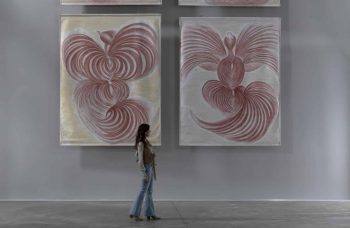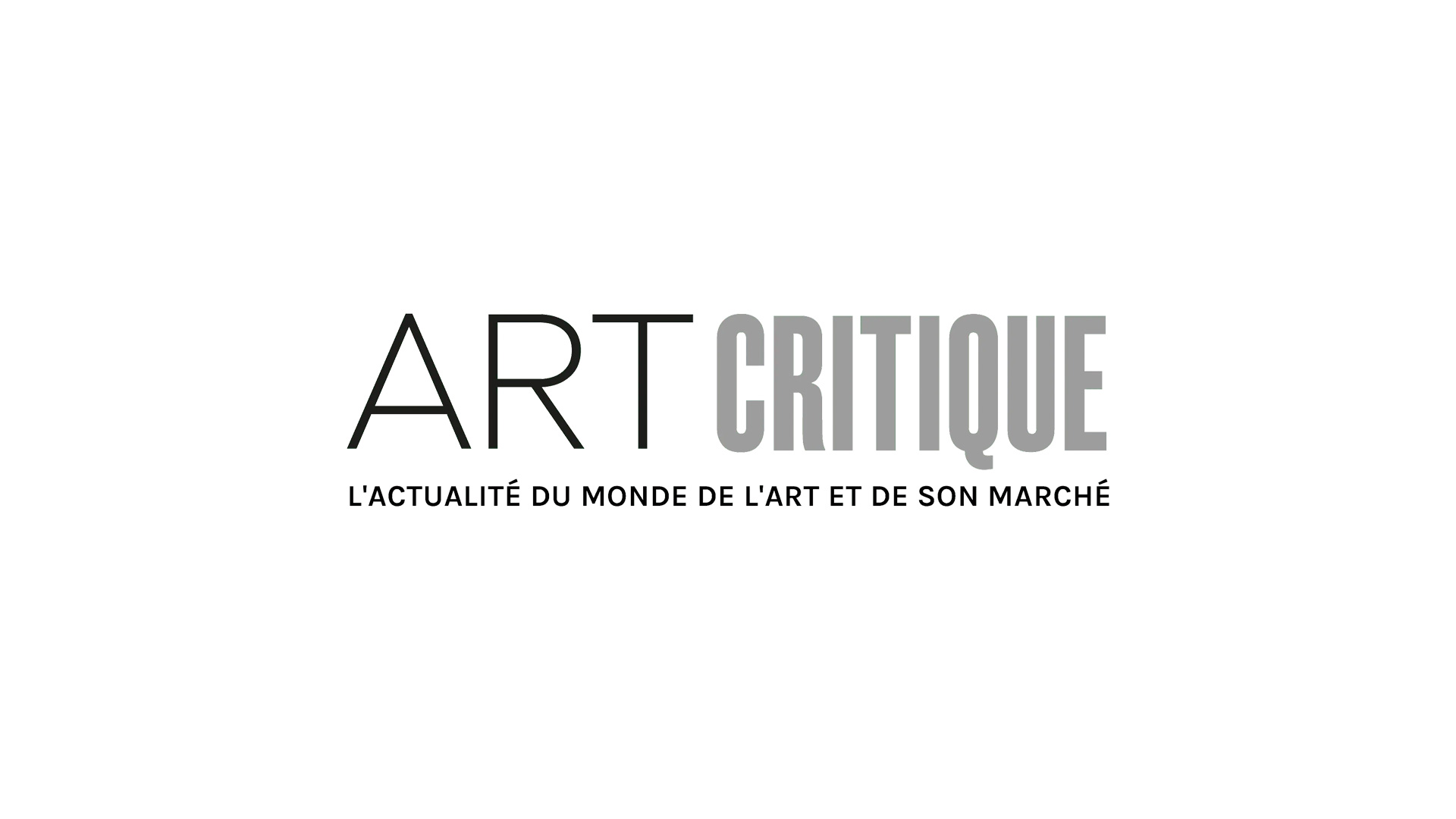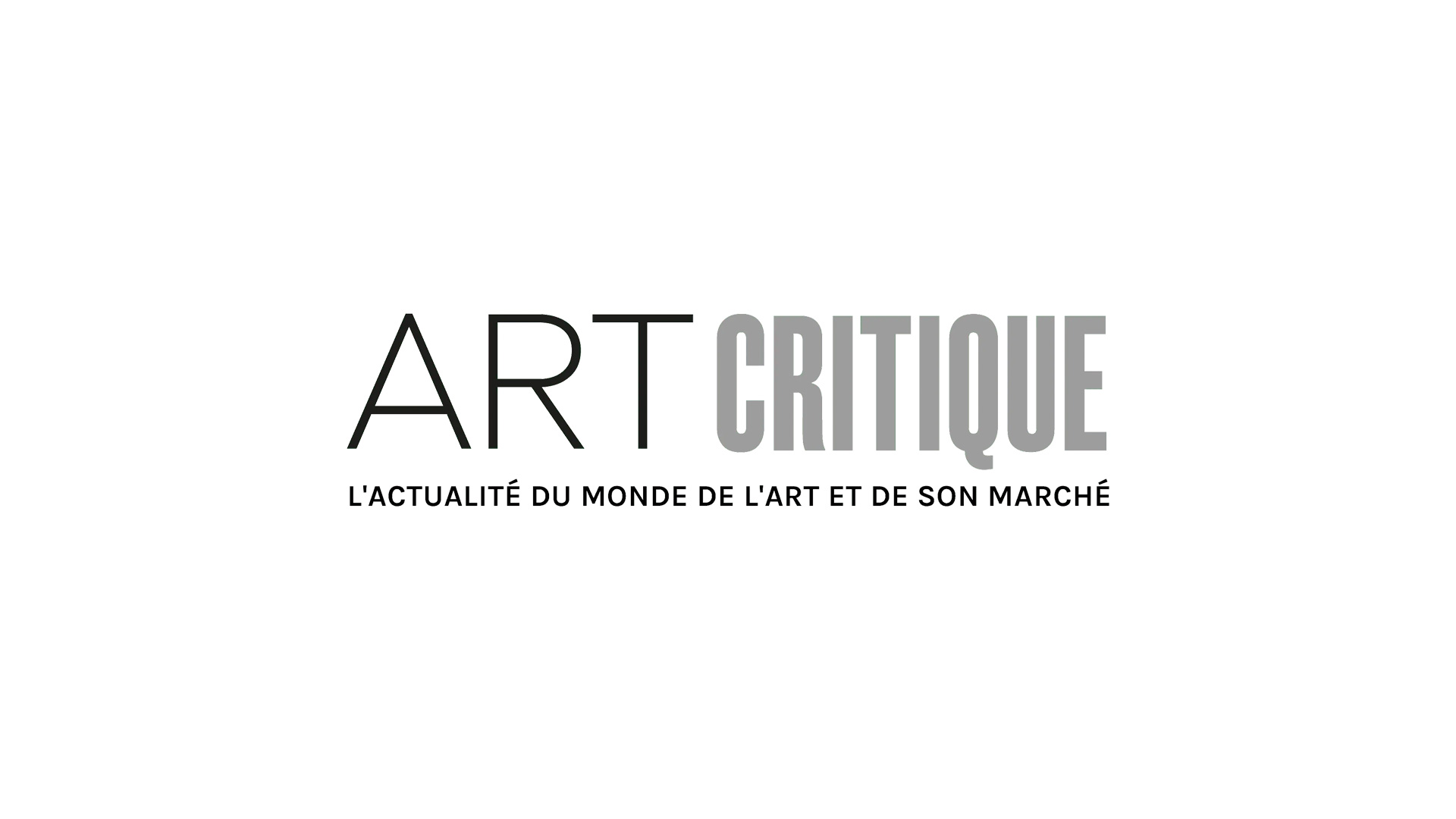In this week’s Art World Roundup, we look at ways Google is saying thank you, the effects of global warming, art in celebration of Earth Day, a photographer’s glimpse of Hart Island, and the Yorkshire Museum’s #SassiestObject challenge.
Google Doodles: using animation to say thank you
Let’s face it: being at home all the time has meant many more hours on our laptops. So, you’ve probably become pretty familiar with the Google Doodles of late and you’ve probably noticed a trend. Though more straightforward than some Doodles, the search engine’s homepage has taken the few seconds we spend there to say thank you to all the essential workers whose jobs can’t allow for them to work from home. Nurses, doctors, sanitation workers, custodial staff, public transportation workers, teachers, childcare workers, packaging and delivery people, grocery store workers, farmers, emergency personnel, and public health workers, researchers, and advisors are among those who have been specifically thanked by Google. It’s one of many small ways – from painted rainbows to doorstep clapping – that people everywhere are hoping to say thank you during such an intense time.

Viking artefacts uncovered as global warming wreaks havoc on icy mountains
Buried and frozen in place for more than millennium, melting ice on a Norwegian mountain range has uncovered a trove of around 800 Viking artefacts. The melting ice is one of many negative impacts global warming is having on the world but these findings do provide an uncomfortable silver lining. The found objects prove that the mountain ranges were traversed by Vikings and provide a better understanding of the hardy people. Among the findings are a woollen mitten, horseshoes, a tunic, a leather shoe, arrowheads, a horse snowshoe, and many other items that would’ve been used on the trek. “The Viking age is one of small-scale globalization: They’re sourcing raw materials from all over,” archaeologist Søren Michael Sindbæk of Denmark’s Aarhus University, told Science, although Sindbæk was not a part of the project. “This is the first site where we have good chronology and the finds to illustrate that.” More on the mission can be found in Antiquity, the scientific journal in which the findings were published.
Photographer detained for illegal images taken of mass graves in New York
George Steinmetz is a distinguished photographer whose impressive, mostly aerial shots have been featured in National Geographic and the New York Times Magazine. His works usually focus on landscapes to highlight agriculture and the effects of climate change around the world. However, a photo posted to his Instagram a week ago was slightly different. It was still shot from the air, using a drone, so not unlike other works of his, but the subject matter was somewhat jarring: it was of mass graves being dug on Hart Island, New York City. The island, which hasn’t been accessible to the public for 150 year, has become the burial site for those who have passed from COVID-19 but whose bodies have remained unclaimed during the pandemic. The paupers graves are being dug by Rikers Island inmates for those whose families were not found after their passing. Shortly after the photos were taken, Steinmetz was cited by police, according to his post, and his drone was confiscated. While a NYPD rep cited laws against the use of drones in restricted areas as the reason for the photographers run-in with police, Steinmetz believes that it was not done out of concern for public safety. “It is clear to me,” said Steinmetz, “that the city was using this law as a pretext to stop people from photographing what was going on on Hart Island.”
Olafur Eliasson creates art to celebrate Earth Day
April 22nd was the 50th anniversary of Earth Day and while many of us weren’t able to go out and enjoy the world around us, artist Olafur Eliasson, well-known for his environment-focused works, marked the day with a new participatory work. Named Earth Perspectives, the short videos feature bright orange and pink splotches of colour set against a grey background. Each of the nine works in the series highlight a different vulnerable place on earth and instruct you to stare at the black dot for 10 seconds. After those few seconds, the orange and pink image disappears, leaving you with a temporary view of Earth. The optical illusions are part of the Serpentine Galleries’ “Back to Earth” initiative, which is an ongoing project that has asked for artists, scientists, architects, musicians, and other creatives to respond to the climate crisis we face.
Show us some sass
Who doesn’t love a good bit of sass? The Yorkshire Museum (YM) has kept the entertainment (and now sass) with their weekly #CURATORBATTLE. Last week, they kicked off a week of down-right creepy museum objects after asking for museums to submit their creepiest objects. Today, though, the YM set forth their next challenge: the sassiest objects out there. To start everyone off, they presented a gif of Emperor Constantine the Great who dished out sass according to the YM by becoming emperor of Rome, reuniting the Roman Empire, and getting a city named for him. The YM wants to see who can top them and, as expected, museums are already upping their sass game. So for this edition of the Art World Roundup, we leave you with these gems:
IT’S TIME FOR #CURATORBATTLE💥This week’s theme is #SassiestObject!✨
We’re starting with this bust of Emperor Constantine The Great. He won the throne, reunited the #Roman empire, AND named a city after himself.
It’s even in his name. He knows he’s worth it.
CAN YOU BEAT IT? pic.twitter.com/JnGUfryhVO
— Yorkshire Museum (@YorkshireMuseum) April 24, 2020
Our sassy Ocean Sunfish says
“Talk to the fin pal” 🤚🐟#CURATORBATTLE #SassiestObject pic.twitter.com/eSFwbLoHOp— Natural Sciences NMS (@NatSciNMS) April 24, 2020
Our Hippo says ‘You don’t even KNOW sass!’#SassiestObject #CURATORBATTLE pic.twitter.com/L2YHcw7elY
— Dublin’s Dead Zoo (@DublinDeadZoo) April 24, 2020
Some sass from WW1 and advice that is as relevant now….@BarnsArchives #SassiestObject #CURATORBATTLE pic.twitter.com/zARAkBLayf
— Barnsley Museums (@BarnsleyMuseums) April 24, 2020
IT’S OKAY, we’re here! And there’s nothing that says sassy like a sedan chair. This boujee baby was made in Savoy, Italy in the 18th Century for those too fancy to walk. I mean, who wants to get their shoes dirty while working on that step count? 💁♀️ #SassiestObject #CURATORBATTLE pic.twitter.com/dP7aAJKasN
— National Leather Collection (@museumofleather) April 24, 2020
Masaniello? More like Ma-sass-iello!
Here’s Marcelin Lafont demonstrating some serious sass in costume as the Neapolitan fiserman and rebel Masaniello, in the Daniel Auber opera ‘The Mute Girl of Portici’.#SassiestObject #CURATORBATTLE pic.twitter.com/RzMRtWNrJE
— Royal College of Music Museum (@RCMMuseum) April 24, 2020
Right. Here goes. Our first submission is a mugshot of Maria Dawes. She’s *done* with everything. If photos could speak, this one would use ALL the expletives. #SassiestObject #CURATORBATTLE @YorkshireMuseum pic.twitter.com/q199Hgo9mr
— National Justice Museum (@JusticeMuseum) April 24, 2020





